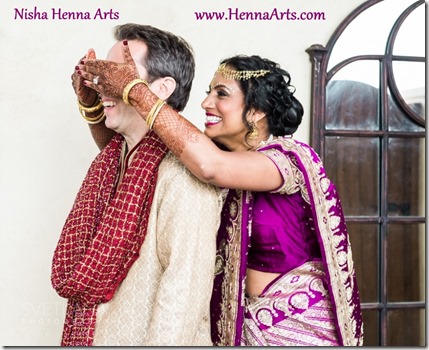Henna is one of the essentials of Asian weddings. Its history is ancients and its significance is manifold. Henna tattoos are a tradition of Indian weddings and is spreading profoundly amongst the other cultures as well. Western couples are also fascinated by the astonishing designs even with their extravagant white grown and synthetic diamond rings. Henna is known as Mehndi and is a specialty for desi weddings. It is actually a plant which is dark green in color and applied on the skin via nose of a cone. It takes hours to dry and the female friends and family members get together with the bride to apply henna on her hands and feet a night before the wedding. They celebrate the union all night long as a party with making henna tattoos and food.
Here we will look into some of the amazing facts about Asian weddings and henna which most people are not aware of. Some of those facts are:
1. Sign of Good Omen:
When the henna plant is dried, it leaves beautiful orange and sometimes dark red color on the bride’s hand. All the girls and bride take adequate measures to darken the color of their henna. In the Indian culture, darker color on a bride’s skin signify as a good omen and it is a firm belief that the couple will have a long and happy married life. It indicates that the husband of the bride will be loving and always care about here during thick and thin.
2. Prize Money Ritual:
The henna artist applies the henna with the designs which include the initials of the groom’s name. The initial of the name is hidden in between the design in such a way that it is difficult to figure out where it is located. The tradition is that the groom will have to find his initial engraved on the bride’s hand. It is a ritual and fun activity on the day on the wedding. If he is not able to find his name, then he is fined to pay a prize money to the bride.
3. Mehndi Party:
Henna party is a joyful occasion and it is to entertain the bride by dancing and singing. Friends of the bride come along to bring her treats and sweets of her choice. It is a time when the elders of the family sit with the bride to give her lifelong secrets of a fruitful and happy married life. This is like a farewell party for the bride and a henna artist is booked to complete the intricate henna designs on the skin of the bride. Henna parties are celebrated not only in the Asian Subcontinent but also in Morocco, Gulf States and eastern Mediterranean countries. It is also a celebration for expatriate communities around the globe.
4. Scientific Fact about Henna:
Having cold feet and nausea is not a new thing for a bride before the wedding ceremony. It is a constant state of confusion and chaos amongst the colors and joyful little moments. The Bride leaves her parent’s home and goes with her husband to build a life together. It is sometimes stressing for a bride. Th use of henna is not only a cosmetic or ritual to beautify the bride, but also have a cooling effect on the body. It calm’s the bride’s muscles and nerves so she can relax and enjoy the beautiful moments of her wedding.
5. Antiseptic Properties:
Henna is applied to the bride and groom as well in the ceremony of Mehndi. It is a proven fact that the henna plant contains antiseptic properties. It reliefs and guards your metabolism from viral diseases like fever, flu and headaches. It is used to protect the bride and groom from any illnesses so they are energized and alive on their big day.
6. Warding for Evil Eye:
It is believed in Islamic and Jewish cultures that the application of henna on the bride and groom will protect them from evil eyes of any of their enemies. The evil eye is a popular belief that people who resent, you will try to jinx your big day or an evil eye will bring unhappiness in a marriage. That is why relatives of the bride and groom will use henna to ward off any evil or adverse energies around them.
7. Asian Wedding Rituals:
In contemporary Asian culture, the relatives of the groom bring henna, bangles and yellow clothes for the bride. It is considered a bonding experience where the mother in law of the bride first applies henna on the bride’s hand. It is believed that the blessings of elders like her will strengthen the bond of the marriage and is sometimes associated with increased fertility.
Conclusion:
Asian weddings are like a great reunion of the families and relatives who clear their schedule to give blessings to the groom and bride. The use of henna dates back to the ancient rituals and it a way of giving the people quality time together and a chance to pay tributes and prayers to the sacred reunification of the wedding.





